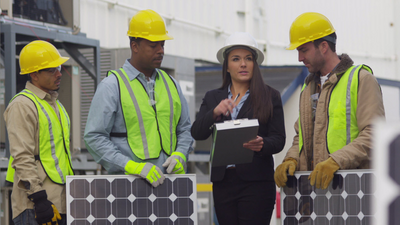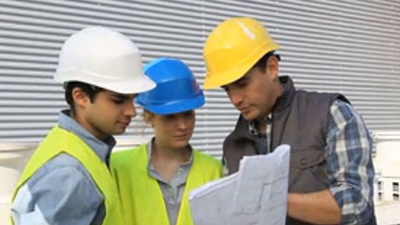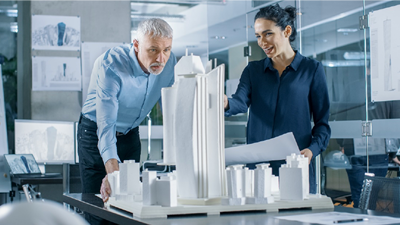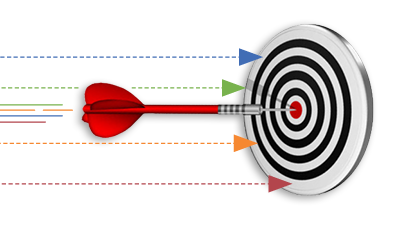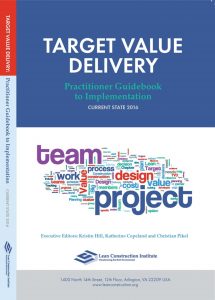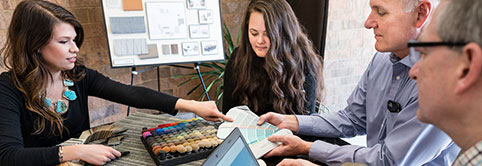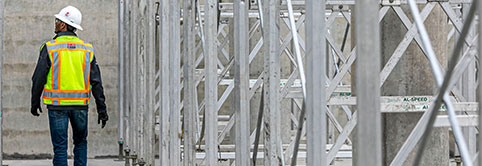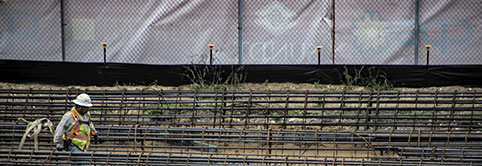5S Lean
An Introduction to Lean 5S
It’s no secret that maintaining an organized and tidy work environment is great for providing one with peace of mind. But disorganization isn’t usually manifested on purpose. The “I’ll just move that later” mindset can take hold of us all, especially when we’re in the midst of an important task. However, practicing constant vigilance in workplace organization will actually lead to fewer problems down the road.
The 5S methodology is a tool for keeping the workplace clean and organized, and thus safer. 5S improves workflow and cuts down on several types of waste, making it an effective Lean tool that can improve the outcomes of design and construction projects.
What is 5S?
A disciplined approach to maintaining order in the workplace and using visual controls to eliminate waste. The 5S words are Sort, Set in Order, Shine/Sweep, Standardize and Self-Discipline/Sustain.
The 5s System: A Mindset
The 5S mindset encourages workers to only have materials, information, and equipment where it is needed and when it is needed. While a worker may think it prudent to keep extra materials and equipment near them in case they need it later, doing so will only lead to decreased organization and increased injury risk for other workers on the job.
The goal of a 5S system is to keep work and organization simple. Simple is not always easy, so the 5S process helps to provide a lens through which to analyze the state of organization and workflow in the workplace.
The 5S Methodology
5S for workplace organization is a five-step structure for reducing waste and improving safety in the workplace. The 5S steps are…
1. Sort
Determine what is needed and move everything else to an assigned storage location. Anything that is not needed in that place and in that moment is waste. Clutter creates hazards in the workspace which can lead to worker injuries. In a cluttered space, workers need to spend time walking around unneeded materials which leads to wasted time in addition to the wasted space.
2. Set in Order/Straighten
Create a place for everything and keep it there until it is needed. An unorganized workspace leads to workers wasting time looking for materials and information they should be able to find easily. The earlier in the process you organize all of your materials, the easier it is to maintain and the more effective it will be in the workflow.
3. Shine
Keep your space consistently clean. Make an effort to clean as you go so as not to leave messes in the work space. Leave each space cleaner and more organized than you found it. Make sure all of the tools and equipment your team is using are operational and make a plan to fix broken equipment. Left unchecked, a small mess could snowball into an even bigger one down the line. Imagine how unhappy you’d be to walk into a messy workspace or to find a tool you need was left broken by its previous user.
4. Standardize
Create standards to stay organized and clean. Repeated and standardized processes are needed not only to allow for continuous improvement to occur, but also to keep work efficient. Workers know what to expect when work is standardized and less time can be spent overexplaining simple processes.
5. Self-Discipline/Sustain
Sustain processes that work and have the self-discipline to not allow processes to get bogged down by waste. Make the working conditions and processes consistent so it’s easy to see when something is out of place.

5S in Lean
5S supports many of the six tenets of the Lean Construction Institute including improving process and flow, eliminating waste, and continuous improvement. You could also argue that keeping a tidy workspace is demonstrating a respect for the people around you as well.
Dedicating time to focus on the organization and cleanliness of the work space may seem counterproductive to Lean culture given that Lean methodologies focus on removing any steps to the process that don’t directly add value to the outcome. However, practicing 5S is Lean because it helps to remove vast amounts of future waste. In the end, it supports Lean thinking and makes work much more efficient and safe.
How 5S Makes Us Better
5S provides numerous benefits for workers. Everyone likes a clean and organized work space, but few grasp the degree to which practicing 5S can improve projects and their outcomes. The impact of 5S can chiefly be seen in four different areas.
Safety
Increased focus on organization on the jobsite also leads to more safety. With fewer materials strewn about the workspace, workers are at less of a risk of tripping over something unexpected or having a material crash down on them. Making processes safer is a key component to the Lean mindset.
Quality
An uncluttered workspace allows people to have more mental and physical room to focus on the work itself, which leads to more quality outcomes for the customer or stakeholder.
Productivity
Workers are able to accomplish more when they can easily find materials and information through a well-organized workspace. Less time spent looking for materials they should be able to find easily means more time spent creating value.
Schedule
Pull planning in an organized workspace means materials show up only when and where they’re needed. Workers know what to expect when organization and processes are consistent.
Why 5S Matters
Whether you’re in the middle of a project or about to start a new one, your team will reap the benefits of applying 5S thinking to your work. The time spent on creating an organized workspace will be more than made up for in increased safety and productivity towards reaching your project’s outcome.
The Lean Construction Institute is committed to transforming the design and construction industry by providing educational resources, conducting research, and facilitating local and national Lean events. Explore supplementary resources below to further your understanding of 5S .
Lean Assessments
How strong is your Lean knowledge? Take a Lean assessment to determine your current state so you have a baseline for improvement. Lean assessments are available for individuals, teams, and organizations alike. Whether you’re new to Lean or are an experienced Lean practitioner, Lean assessments are a great way to get started at LCI!
TAKE ASSESSMENTMore Lean Topics
From 5s to IPD, explore popular Lean design and construction topics below.

